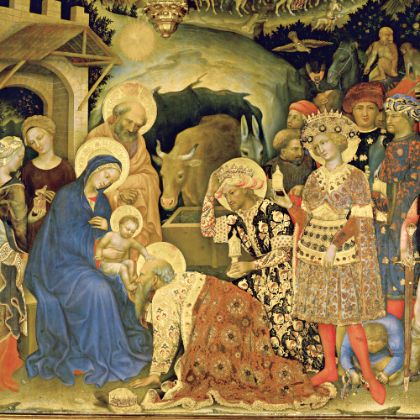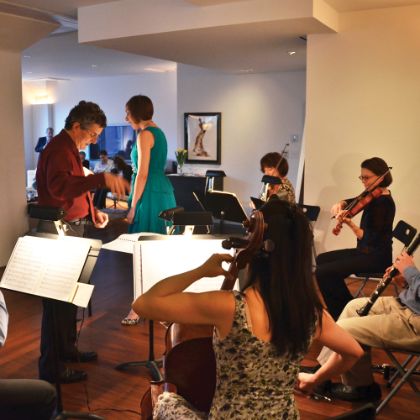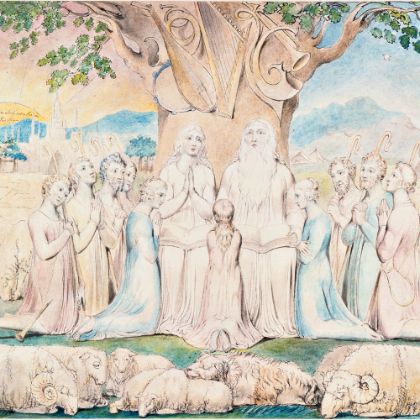Pianist Louis Lortie and the Quebec Symphony Orchestra record Mendelssohn.
By Ben Finane
“Where is this guy?” Louis Lortie asks from the balcony of Palais Montcalm’s concert hall in Quebec City. His question as to the whereabouts of Felix Mendelssohn seems only half-rhetorical. “Where is he in history? Is he closer to Beethoven? He takes some things from Beethoven, he takes some things from Mozart — where is he? That’s what you have to find.”
It is late April, and the French-Canadian pianist Lortie and the Quebec Symphony Orchestra have gathered here to search for Mendelssohn during two packed days of recording sessions, tackling the composer’s two piano concertos and “Reformation” Symphony (No. 5) for the Montreal-based label ATMA Classique. Though he arrived as a pianist, Lortie’s responsibilities increased after the orchestra’s music director, Yoav Talmi, returned unexpectedly to Israel for surgery. Lortie, who has conducted the orchestra only once before, took the podium for the “Reformation.”
Lortie notes that Mendelssohn used to be seen as a follower of Beethoven, imbued with the same kind of weight and density that would have been given to most of the Germanic followers of Beethoven. “People have recently reassessed Mozart as a more important figure in Classicism and in the understanding of Mendelssohn and his influences,” he says, noting that current Mendelssohn editions remain poor, requiring conductors and musicians to work more instinctually.
“I think Mendelssohn was a Romantic soul in a Classical body,” says Lortie. “His framing, his structures were very, very Classical. But the feeling is Romantic. A little bit like [Carl Maria von] Weber: both of them have these long passages that are transitional. What do you do with them? They are inconsequential. The thematic material is not always easy to divine. There’s a lot of counterpoint with nothing obvious in the procedure. They can sound ‘patchy,’ both of these composers, because they have these long stretches of sequential writing.
“I’m trying to bring much more transparency and lightness, more subtlety to this music than is usually present,” he says of the Reformation Symphony. “Most conductors give a lot of attention to the bass frequencies and I’ve taken that away from most of the piece.” To wit, Lortie has done his best to soak up the timpani by adding some foam behind them to dampen the sound. He also asked the brass to lighten up as much as possible, which he says can be difficult physically and psychologically. While recording, the trumpets grew discouraged when they couldn’t play as quietly as Lortie demanded, but “they were willing to do it,” he says. “It must be incredibly frustrating — you have just a few spots of sforzandi, and then the guy tells you, ‘No, no, no — no sforzandi.’”
The intimate thousand-seat hall at Palais Montcalm complements Lortie’s vision. “Nice reverb,” he says. “You don’t need to force like you do in most modern North American concert halls, which are too huge and not at all intended for this type of music.” In addition to having the space on his side, Lortie has ATMA Classique producer Johanne Goyette and sound engineer Carlos Prieto, set up in a makeshift studio beneath the hall, where they communicate with Lortie and the orchestra via speakerphone. Onstage, Lortie and the orchestra speak French. In the studio, in more Quebecois fashion, conversation is a mélange of French and English — and, with this duo, some occasional Spanish.
For the piano concertos, recorded largely on the first day, Lortie sets up his instrument in front of the other musicians without a lid. It’s a “chamber-music way of doing things,” he says. “I think the musicians feel they are participating and communicating much more directly this way. Otherwise there is this wall, which is the piano lid, and the winds don’t hear the piano.” If everyone can hear the piano, says Lortie, then there is no need for the presence of a conductor “just beating to make sure ensemble work is going on.” That said, Lortie stands behind the piano conducting during tacet passages. (It can’t hurt.)
“I like the sound,” Prieto whispers conspiratorially in French after a cut-off to Goyette, who nods her hid vigorously. “There is some noise here and there,” he muses, and then vanishes to adjust some on-stage microphones, returning unnoticed. Goyette is concerned about the added mics for the woodwinds. “It’s nice sometimes and other times it’s too windy,” she observes during the Adagio of the First Concerto. The orchestra tries again. “Nice ending — maybe too much flute, but we can take it off,” she says to Prieto. To the Maestro on the speakerphone: “Très belle fait.
Encore mieux. Louis Lortie and the Quebec Symphony Orchestra record Mendelssohn’s Piano Concertos and “Reformation” Symphony in two and a half days at Palais Montcalm in Quebec City. Originally booked as the piano soloist, Lortie also found himself conducting the symphony once the orchestra’s music director had to bow out unexpectedly.
A concert recording he made a week ago of the same concertos, Lortie says, has helped him “judge what I overdid post-concert and do some thinking about proportions.” During musicians’ breaks in the concerto recording sessions, Lortie runs down to the studio to listen to the takes. “Oh, this is the one we have to take,” he says, listening to the opening Allegro. Later, in a busy and demanding sixteenth-note passage: “I reversed the chord here, la–mi–do, pas do–mi–la.” Goyette circles it in her score in pencil to re-record. Lortie is not recording with a metronome, but Goyette tells me that his sense of tempo is so keen that passages can be re-recorded and seamlessly spliced in.
“Have you seen the Lang Lang Gewandhaus performance [of Mendelssohn’s First Piano Concerto] on YouTube?” Lortie asks suddenly, turning to me. “He thinks he’s Bang Bang — and always looking at the audience!” Lortie shakes his head. “Still,” he says happily, “impressive technique.”
In the Adagio, Lortie is relieved that the second take was more in line with his aims: “Ah, this is better here,” he says in French. “The counterpoint is better, more Classical. The other has the air of Chopin — that irritates me. This is more religioso, simpler, more protestant. The other is too catholic.”
If during the concerto recordings Lortie lets his piano speak for him as far as interpretation, before the symphony there is more of a strategy session with the orchestra onstage, discussing crescendos, attack and the arc of the piece. When a trombonist enters rehearsal late, the orchestra deliveres a subtle stomping of its feet as a sardonic fanfare; a colleague in the French horn section signals him with a pantomimed insinuation inquiring if he was drinking the night before. The group is clearly comfortable with each other, if a tad exhausted.
Lortie concedes that he of course could have used more time with the “Reformation” Symphony, for which there is no “point de repère,” or reference point. “There are no easy references in the music because a lot of the language is not so clearly written up; the phrasing, articulation, even the dynamics in the score are very imprecise — a lot of it needs to be rethought.”
The pianist–conductor invests much of the orchestra’s time during the “Reformation” recording and re-recording the opening phrases of the Andante in hopes of pinpointing pristine balance in the brass and woodwinds. The approach seems draconian and more and more hopeless as they continue through take after take; then suddenly, in a moment, the sound finds its shape, the color rising lightly into the ether of the hall, evidence of the transparency Lortie has been seeking. Hopefully it is captured and archived before it dissipates.

-

From Christemasse to Carole
The birth of Christmas in medieval England
Read More
By David Vernier -

The Next (Not-So-)Big Thing
New chamber orchestras are popping up all over America.
Read More
By Colin Eatock -

A Father's Lament
Finding solace in the sound of authentic sorrow
Read More
By Rev. Jake Bohstedt Morrill